“The past is a foreign country. They do things differently there.” Nothing salutes the historian’s task more cogently than that lapidary first sentence of L.P. Hartley’s 1953 novel The Go Between. In fairness to Filippo Lippi, there is more to say. And the honor of history demands it—not to clear a path through the thicket of present concerns or to shake a finger at either past or present. But simply to understand our world without—as best we can—an ulterior motive.
Despite Vasari’s known bent for embellishment, his spirited account of Fra Filippo’s elopement with Lucrezia Buti has been accepted in its essentials. Only one detail is in error. Vasari wrote that the scandal “brought much disgrace . . . upon her father, who was never seen cheerful again.” But the father, a widower, had died in 1450 when Lucrezia was fifteen. Her elopement occurred in 1456. By then, she was no longer a ward of the convent, nor a novice, but a fully pledged nun. Fra Lippi was then chaplain of her convent, Santa Margherita in Prato, a Tuscan town near Florence.
• • • • •

The subject of Madonna della Cintola dominates the history of Fra Filippo’s love affair with Lucrezia. Tradition has it that Mary’s belt [the Sacred Girdle or Sacra Cintola], made out of camel hair by the Virgin herself, is the only remaining relic of her earthly life. Might it have fallen off during her Assumption? Or did she untie it afterwards to give to the Apostle Thomas? According to one version of the lore, Thomas, absent from the Assumption, grieved over his absence, and sought Mary’s blessing. It came in material guise.
• • • • •
Annual exhibition of the Sacred Girdle was a major festival in fifteenth century Prato. During the celebrations, the nuns of S. Margherita were allowed to leave the convent to join in the festivities. It attracted great crowds. Inhibitions wane in revelry. The nun and her chaplain—already enamored of her as his studio model—bolted to Fra Filippo’s nearby house. Historian Rudolf Wittkower, a distinguished authority of Renaissance and baroque art and architecture, summarized:
The Mother Superior and Church authorities tried to avoid a public scandal, but when first Lucrezia’s sister Spinetta Buti, and soon after three more nuns slipped away, action was called for. It took two years to bring the five fugitives back to the fold.
In the meantime, Lucrezia had borne Filippo’s son, Filippino. All five women repeated their ceremonial investiture in 1459. The penitents solemnly promised to rehabilitate their ways and obey convent rules. But within less than a year three of the nuns had taken up with their former beaux. It is not known precisely when Lucrezia and Spinetta decamped again. But by 1461 both were living in Fra Filippo’s house. This time Cosimo de Medici interceded with Pope Pius II, who later relieved Filippo of his vows. The former frate was then free to marry.
This is a good place to stop. Filippo never ceased tom-catting. It is an exhausting saga. Stay with his paintings. The splendor and refinement of them have outlived his sins. And they will endure for as long as Western eyes can still see.
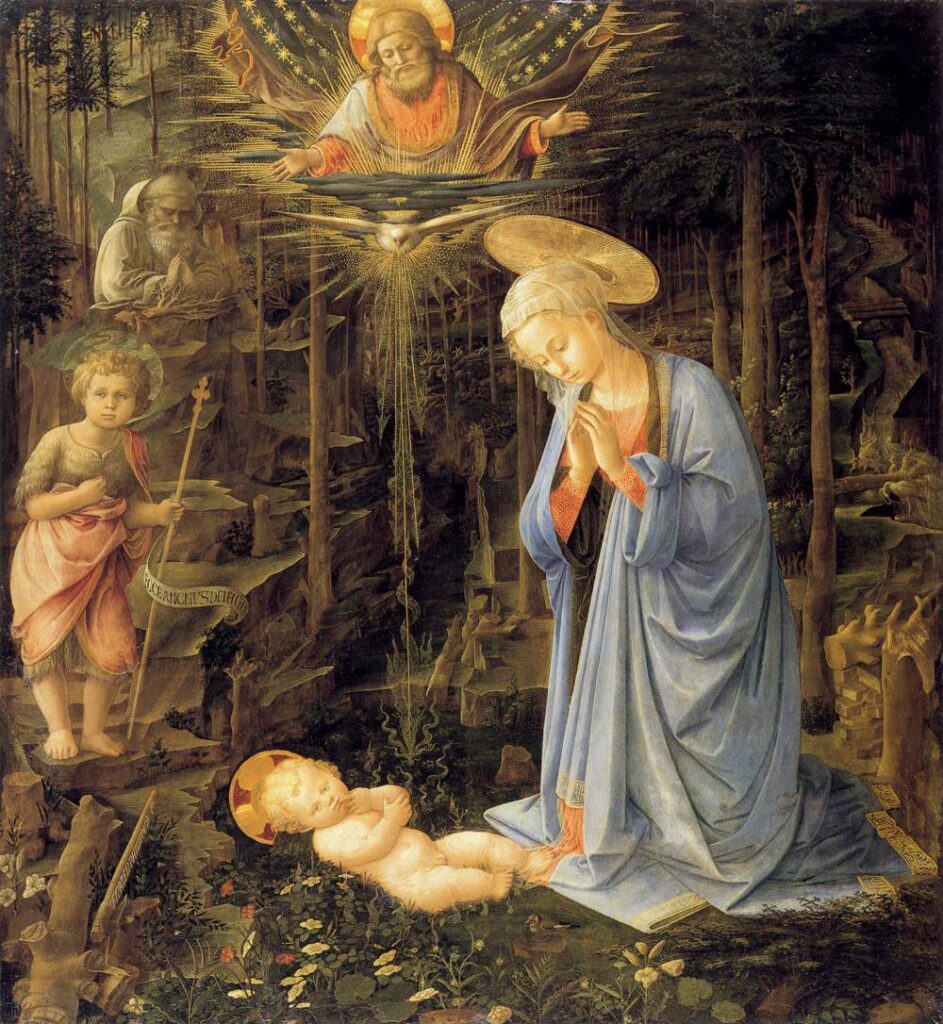
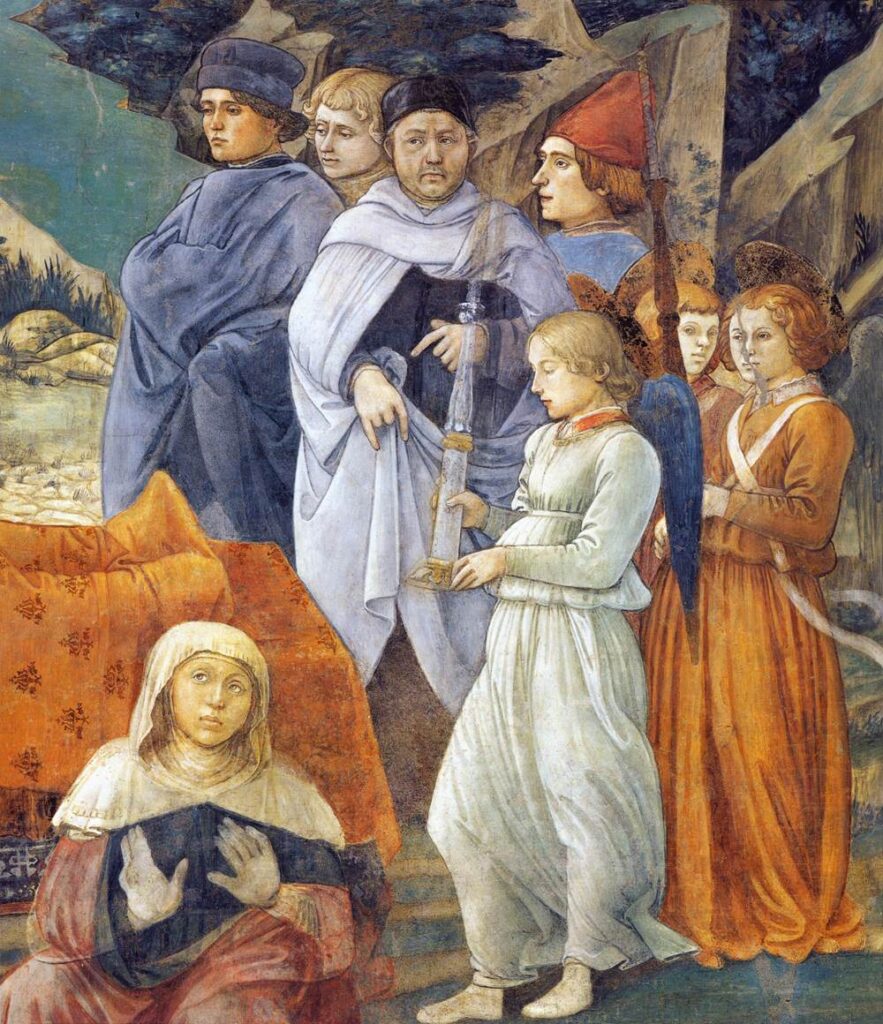
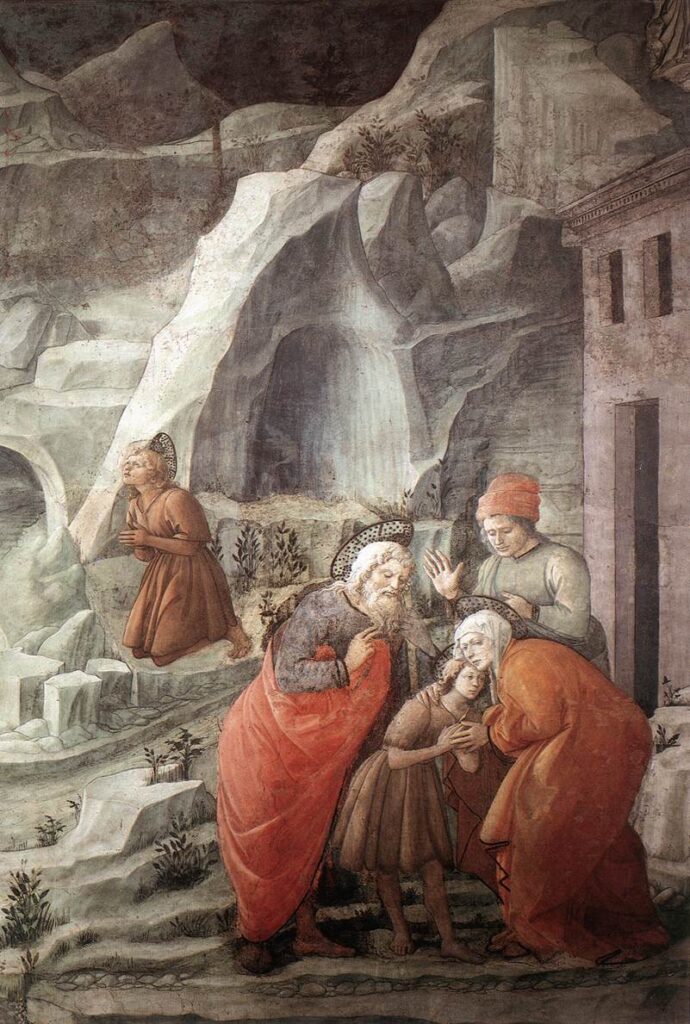
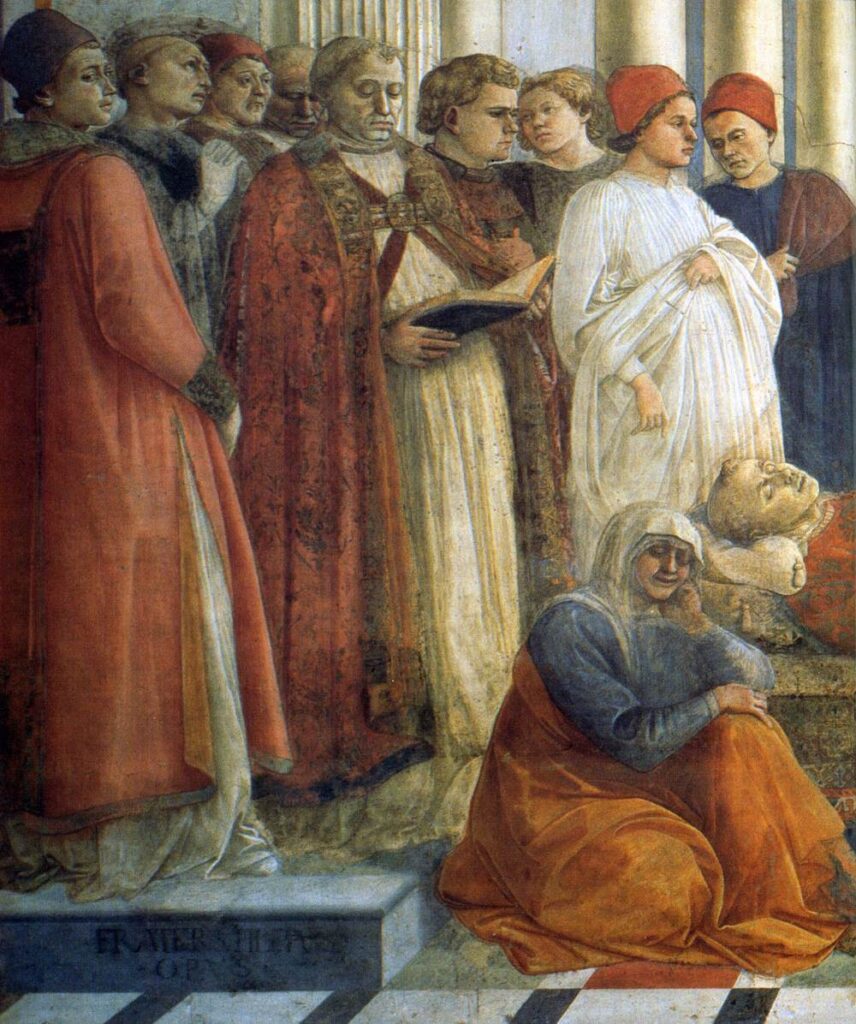

• • • • •
Born Under Saturn, Rudolf and Margo Wittkower’s classic study of the character and conduct of artists, is an enthralling treasury of documented gossip of the art historical kind. It locates Filippo Lippi’s reckless ardors in the context of times in which, yes, things were done differently. At least, some things:
Like so many orphans Filippo and Lucrezia, who had lost both parents in early youth, had been destined by their relatives for a monastic life at an age when they themselves had no choice in the matter. The practice of handing over to monasteries children who would later find they had no vocation whatever for a religious life inevitably produced a great many cynical monks and nuns. [Filippo was sent to a Carmelite monastery for caretaking in childhood. He took final orders at age fifteen and left the monastery in 1432.]
But this can only partly explain the extraordinary moral laxity among members of the clergy, which is confirmed by many documents of the time and which, in later years, was one of the chief complaints of all church reformers. Thundering against straying churchmen, Savonarola exclaimed in a sermon in 1493: “You can see priests who gamble openly, who frequent taverns, keep concubines and commit similar sins.” And he denounced nuns who “stand all day at the screen and chatter with worldly youths.”
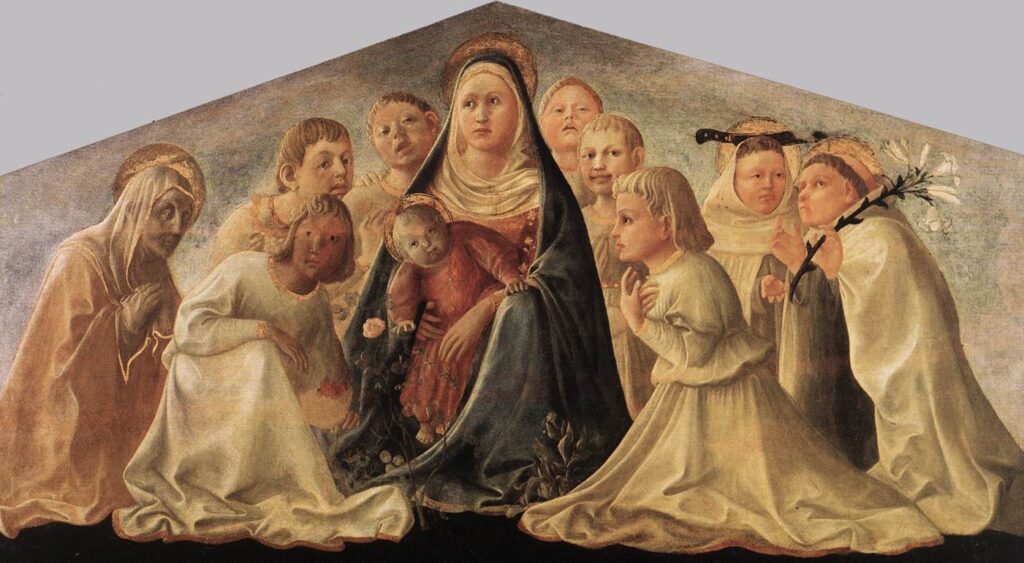
In Art and Scholasticism (1946), Jacques Maritain asked “how could artists, so devoid of piety as many in the fourteenth and fifteenth centuries, have produced works inspired by such intense religious feeling?” He answered himself by stating that these artists remained “steeped in Faith as far as the mental structure of their being was concerned.”
In effect, Maritain was restating T.S. Eliot. In Christianity and Culture (1939), Eliot insisted on the nature of a Christian society as “not a society of saints but of ordinary men, of men whose Christianity is communal before being individual.” Put differently, in age of piety—call it Christendom—Christianity was the atmosphere that artists breathed before it was applied to their personal conduct: “It is not enthusiasm [for moral rectitude] but dogma that differentiates a Christian from a pagan society.”

Wittkower asked Maritain’s same question: how it was possible for a man of Filippo ‘s moral fibre to spend his entire life producing pious works, ones of such piercing beauty? His own answer was that, excepting Savonarola’s short-lived campaign of cultural reform:
. . . few people in the fifteenth and early sixteenth centuries saw a contradiction between the licentious behavior and the religious works of an artist. Neither popes, cardinals, nor princes, nor the biographers thought it in the least incongruous to commission well-known libertines with the most important sacred imagery. And nobody was surprised that they fulfilled their tasks with real passion and enthusiasm. This also explains why so many stories about licentious artists were much more readily circulated and accepted [in the past] than by more recent generations.
That brings us back to Meyer Shapiro’s reminder that “in an age of piety one does not have to be religious in order to create a truly religious work of art.”
The old Adam is ever with us. But gone is the age of piety which informed—and furnished—the limits and measure of art.


